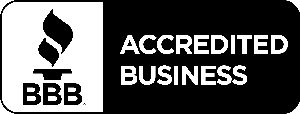 A+ Rating
A+ Rating
 A+ Rating
A+ Rating
Paint only adheres as well as the surface it’s applied to. Cleaning, sanding, and priming create a uniform, bond-ready base that prevents peeling and maximizes coating life.
50 °F – 85 °F surface temps, with overnight lows staying above 40 °F for 24 hours after application.
60 °F – 78 °F. Uninhabited job sites often need temporary heat to stay in range.
Rapid evaporation causes brush marks and weak film formation, leading to premature fading and chalking.
Paint thickens, can’t coalesce, and may crack or lose adhesion as it cures.
Dry air speeds drying—good for productivity—but can trap micro-bubbles and reduce open time for leveling. Conditioning with water/retarder (per manufacturer) solves this.
Plan at least 4 dry hours after finish coat and monitor Doppler radar. Sudden storms can wash uncured paint right off.
We use a non-invasive moisture meter; readings must be below 15 % before priming.
Every 1,000 ft of elevation adds ~5 % UV intensity. High-solids, 100 % acrylics with UV blockers resist fading best.
Satin or low-gloss exterior acrylics reflect more light than flat yet hide defects better than gloss.
Yes—oil or alkyd bonding primers block tannins and seal porous grain before topcoat.
Once sanded to a sound surface, a high-build acrylic primer levels texture and boosts adhesion.
Power-wash, scrub with TSP substitute, rinse, dry, then apply an alkyd stabilizing primer.
Absolutely. Grease, dust, and hand oils act like release agents that cause fisheyes.
Mild dish soap for light soil; degreaser or TSP-free wall wash for kitchens/baths. Rinse twice.
Heavy canvas drop cloths for floors, 0.5-mil poly for furniture, and painter’s tape 2 inches up baseboards.
Masking speeds production on large jobs; skilled hand cutting gives crisper lines on small trim details.
Yes. Removing plates prevents tell-tale brush rings and speeds up rolling.
A urethane-fortified enamel or water-based alkyd provides furniture-grade hardness and UV resistance.
Fine-finish HVLP or airless with a 310 tip for doors/cabinets; back-roll walls for optimal film build.
Maintain a wet edge, work shaded areas first, and follow the sun around the house.
3/8-in microfiber for smooth; 1/2-in woven for light orange-peel textures.
Manufacturers tweak solvents for faster flash off; always buy “Mountain Region” formulas where offered.
Use breathable mineral-silicate or limewash coatings—never acrylic elastomeric—that let trapped moisture escape.
Yes. Vapor-permeable products (perm rating > 12) prevent spalling during freeze-thaw cycles.
Up to 30 days for full hardness; protect surfaces from abrasion and chemicals during that window.
We schedule portable heaters to maintain 65 °F and turn them off only after primer and topcoats flash.
Modern 100 % acrylic low- and zero-VOC lines match or exceed legacy formulas in hide, washability, and colorfastness.
Two full coats (primer + finish), sprayed and back-rolled, meet manufacturer warranty specs and HOA color-retention clauses.
Exteriors: every 7–10 years (south-facing trim 5–7). Interiors: high-traffic areas 4–6 years, others 8–10.